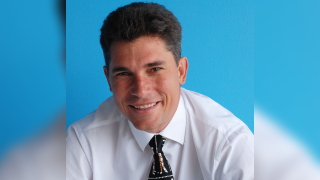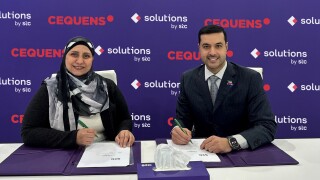
Via subsea cables stretching all the way across the Atlantic, Telxius connects up Europe and the Americas, boosting the company’s ability to meet today’s growing needs for IP, capacity and colocation around the world. Mario Martín, CEO at Telxius, talks about how the company’s continually developing proposition has opened up further options for Europe in the past few years.
How does Telxius view the overall European market for submarine cables at the moment, and how well-connected is the region?
Multiple submarine cables connect Europe to the rest of the world, but – just like in all other global regions currently – demand for capacity remains significant due to the digital transformation. This is even more the case in light of Covid-19, which highlighted the need for strong connections for businesses and people across the world.
There is still a need for diverse routes to provide resilience and connect to locations where major hyperscalers are establishing hubs, and where content providers and global enterprises need new services, with such trends ramping up demand for different options to deliver reliable capacity.
In the past few years, we have seen several transatlantic subsea cables land in southern Europe, including Google’s Grace Hopper cable in the landing station of Telxius at Sopelana near Bilbao in northern Spain last year and our 6,600km Marea cable – which lands in the same location. Such deployments further open up that part of Europe as a strategic point for infrastructure connecting the region with the Americas.
On the transatlantic route, the Dunant cable joins Marea to together offer among the lowest-latency and highest-capacity routes globally, providing diversity and resiliency on this pathway connecting the Americas to Europe and beyond.
What’s the company’s general strategy for strengthening and broadening the reach of its network in Europe?
Telxius has a strong focus in Europe and keeps bolstering its global network to provide direct connectivity to key traffic hubs. The fact that our subsea cables connect Europe with the Americas provides a big positive impact for businesses with headquarters on both sides of the Atlantic.
Telxius links up North, Central and South America via next-generation subsea cables like Mistral on the Pacific coast, and Junior, Tannat and Brusa on the Atlantic coast. Brusa, which connects to the US, is then followed by onward connections across the Atlantic into Europe via the Marea and Dunant cables. In all, we have a lot to offer in terms of providing key access points in the Atlantic region for enterprises that require them, continually developing our network to enhance its resiliency and reliability.
Coupled with the expansion of our submarine cable network, we are actively strengthening our terrestrial backhaul in Europe to ensure that we provide the lowest latency and optimal quality of service for our customers. In 2021, we set up direct links from our communications hub in Derio with Paris and Madrid, and we are now progressing to add our own solutions to reach Frankfurt, London, Marseille and Barcelona.
Finally, we are constantly analysing new projects with a view to expand our networks, providing the most advance and reliable service to our customers.
In what ways is the company helping to enhance Europe’s position and role as a communications hub?
We have established our carrier-neutral Derio Communications Hub, which is also near Bilbao and close to where the Marea and Grace Hopper cables land. These systems connect up to the hub, offering access to high-quality and interconnection-rich colocation, capacity, IP and security services.
Bearing Tier III specifications and an open architecture, the 2,000-metre-square Derio hub, which runs on 100 per cent renewable energy, has 750 square metres of colocation space and offers up to 4MW of power. It acts as an expanded cable landing station with advanced transmission capabilities, as well as a fully fledged international PoP providing a one-stop shop for a variety of cable services. As well as allowing customers to connect onwards to major communications hubs like Marseille, London and Frankfurt, Telxius now offers two direct backhaul links to Paris and Madrid.
Those links help position Spain as a key European communications hub, as well as capitalising on the country’s significance as an access point for traffic coming from Latin America. They also establish a direct route between the Spanish and French capitals, two key traffic hubs in Europe.
How much traction has the Derio hub gained among customers in recent times?
Over the past two years, a number of key customers have connected up to the Derio hub, boosting its position as an interconnection-rich location.
We are proud to say that a good number of carriers, hyperscalers, and content and cloud providers have already joined the Derio Communications Hub. This February, for example, the hub welcomed Colt Technology Services. Arelion also announced the launch of a new point of presence in the hub early last year, bolstering options on the carrier’s fibre backbone and offering customers access to a diverse, low-latency path between the Americas and Europe. Others such as Sipartech have recently connected up their own fibre networks to the hub. Lyntia, EXA, Euskaltel and other players are also present in Derio.
Hyperscalers are big users of Telxius’ high-quality colocation services at Derio Communications Hub, from where they connect to the rest of Europe and across the world. As already mentioned, last year we landed Google’s Grace Hopper in the north of Spain, and connected it to the resources and infrastructure provided by the hub – adding to other hyperscalers that were already present in Derio.
All these moves together show the growing value that a wide range of players perceive in high-quality capacity from this strategic location in Spain, and the major benefits offered by Telxius and its transatlantic routes.
What do these types of developments mean for the overall global reach and standing of Telxius?
They add a richness to the company’s network and standing in Europe to complement the cable systems that it offers on the other side of the Atlantic, including its extensive presence in Latin America. As well as Brusa, these include the Junior cable between Rio de Janeiro and Santos in Brazil, and the 2,000km Tannat and 7,300km Mistral cables that both opened for service last year.
Tannat connects Santos to Las Toninas in eastern Argentina, while Mistral connects Puerto San José in Guatemala with Valparaíso in Chile. Along with other cables such as PCCS, Unisur and SAm-1, which provides a subsea fibre-optic ring around the continent, these routes offer crucial infrastructure to enterprises in Latin America.
All in all, the submarine cable network of Telxius is hugely extensive, spanning more than 80,000km worldwide, and incorporating close to 100 points of presence in 18 countries and 25 landing stations. As a significant part of this, the company’s cables across the Atlantic give it an outstanding position on what is one of the world’s busiest routes for traffic, and enable it to service ever-growing data and content needs between Latin America, the US and Europe.
How does Telxius view its overall future in Europe, and how much promise does the region hold for developing capacity, networks and services in the coming years?
In Europe, as in the other parts of the world where Telxius operates infrastructure, we continue seeking opportunities to meet our customers’ global interconnectivity needs, comprising growing demand for resilient network infrastructure alongside state-of-the-art infrastructure and services.
Amid the digital transformation, Europe continues to offer big prospects as a key global market. In this regard, last year we completed the direct fibre connections of Derio Communications Hub with Madrid and Paris, and our plan is to keep reinforcing our connections with the rest of Europe from the hub in the coming months, to accelerate provisioning and offer an even better service to our customers.
Alongside that, Telxius offers customers services such as additional security through its DDoS Shield, adding value to its IP transit services by helping to protect against the rising prevalence of distributed-denial-of-service attacks around the world. By monitoring and analysing traffic on our backbone network, this can stamp out attacks before they hit a customer’s network, thus aiding continuity of services.
When combined with our hugely extensive cable network across the world, our establishment of high-quality colocation services and development of communications hubs, everything is there to help customers of today move forward boldly into the digital future.




